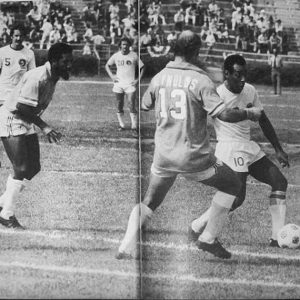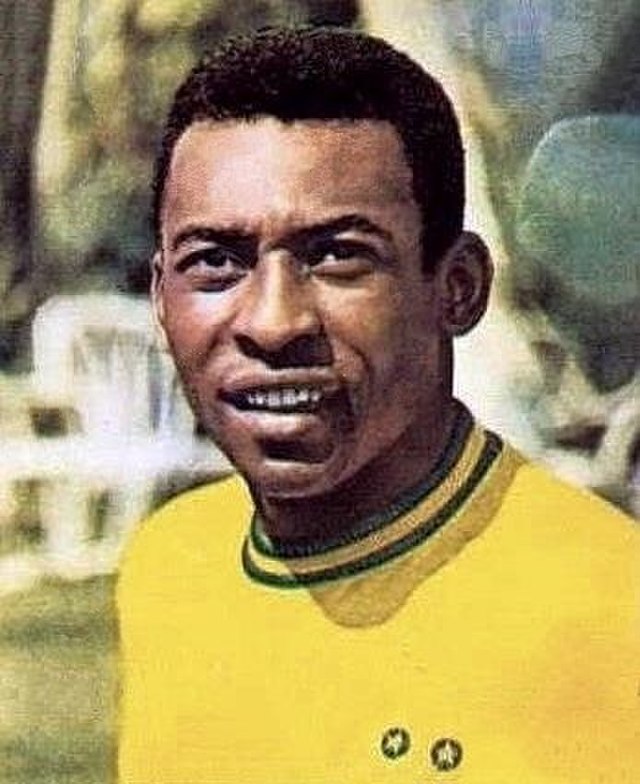This is how Edson Arantes Do Nascimento or Pele, the legendary Brazilian player, became the game-changer for the struggling New York Cosmos in the United States.
The New York Cosmos were a professional soccer team based in New York City that played in the North American Soccer League (NASL). The team was founded in 1971 by Warner Communications executive Steve Ross and veteran sports promoter Ahmet Ertegun. The Cosmos were known for their star-studded roster and their glamorous, celebrity-filled matches at Giants Stadium in New Jersey.
In their inaugural season, the Cosmos finished in last place with a record of 8-14-4. However, the team’s fortunes began to turn around in 1975 when they signed Brazilian soccer legend Pele. The signing of Pele, widely regarded as the greatest soccer player of all time, brought unprecedented attention and credibility to the NASL and the Cosmos. With Pele leading the way, the Cosmos won the NASL championship in 1977 and 1978.
After Pele retired in 1977, the Cosmos continued to be a dominant force in the NASL. They won the championship again in 1982 and 1983, and reached the final in 1984 and 1985. In total, the Cosmos won five NASL titles and were runners-up four times.

In the late 1980s, the NASL began to struggle financially and the Cosmos were no exception. Despite the efforts of new owners, the team was unable to secure a solid financial footing and folded in 1985.
The Cosmos were reborn in 2010 and joined the new NASL, which was a second-division league at the time. The team played at Hofstra University’s James M. Shuart Stadium on Long Island and enjoyed some success on the field, reaching the championship game in 2013 and 2015. However, the Cosmos were unable to secure a new stadium deal and struggled financially, leading to the team’s demise in 2020.
In their nearly 50-year history, the New York Cosmos were one of the most iconic and influential soccer teams in American history. They played a crucial role in the growth and development of soccer in the United States and left a lasting legacy that continues to be felt today.
How did Pele change the game for the New York Cosmos?
We all know the story of Pele changing the game in the FIFA World Cup, but he also managed to shake the NASL to their core with his remarkable skills. He signed for the New York Cosmos in 1975 and it was a game-changer for the team and the NASL. Pele brought an unprecedented level of attention and credibility to the NASL and the Cosmos. His signing sparked a massive influx of international stars to the league, including Franz Beckenbauer, George Best, and Johan Cruyff.
Pele’s presence on the field had a major impact for the Cosmos. In his first season with the team, he led the Cosmos to the NASL championship and was named the league’s Most Valuable Player. He played for the Cosmos for three seasons, winning two more championships and earning two more MVP awards.

Pele’s impact on the Cosmos extended beyond the field as well. His celebrity and global appeal brought a level of glamour and star power to the team that had never been seen before in American soccer. The Cosmos became known for their celebrity-filled matches at Giants Stadium, with everyone from Muhammad Ali to Mick Jagger in attendance.
Pele’s signing with the Cosmos is widely credited with helping to popularise soccer in the United States and establish the NASL as a major league. His impact on the sport in the United States cannot be overstated, and he will always be remembered as a pioneer and icon of American soccer.
How many goals did Pele scored for the New York Cosmos?

Pele scored 31 goals in 58 games for the New York Cosmos. He played for the Cosmos from 1975 to 1977, winning three NASL championships and earning three Most Valuable Player awards. Pele’s 31 goals for the Cosmos came in just three seasons, an impressive feat considering he was in his mid-30s at the time.
Here are more stories related to football.

